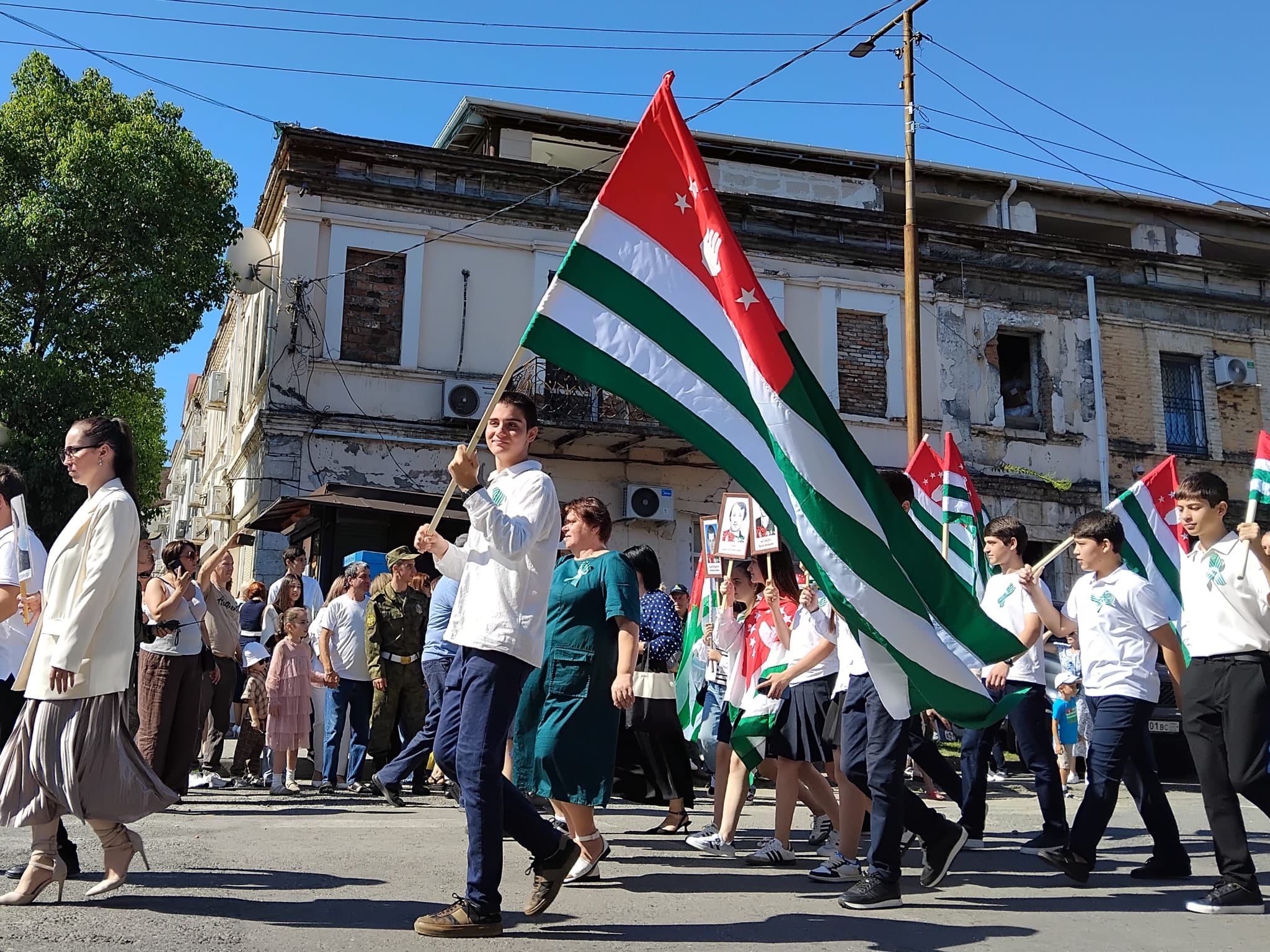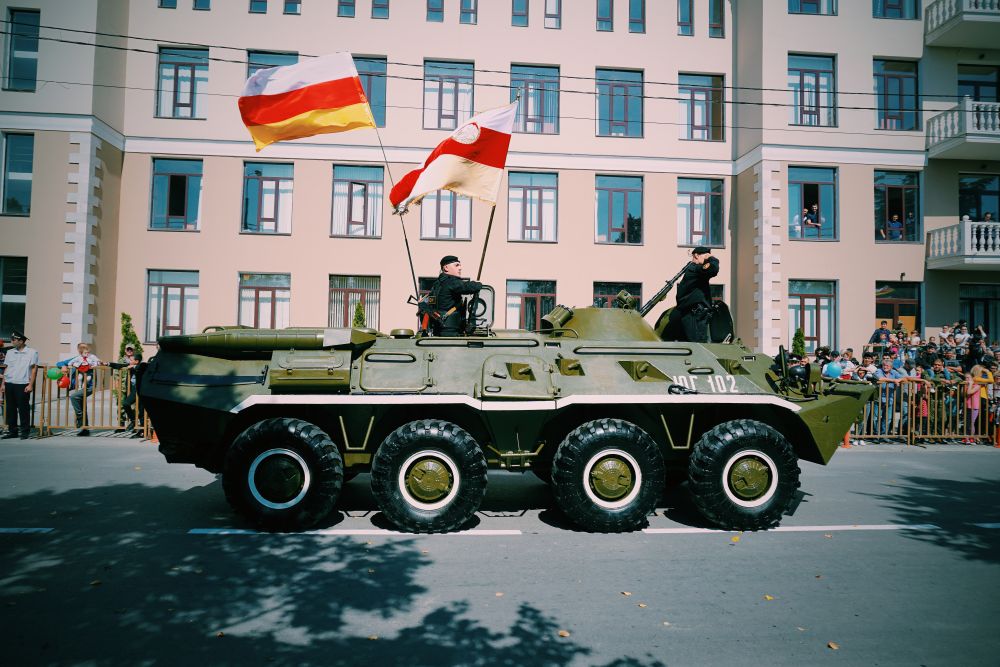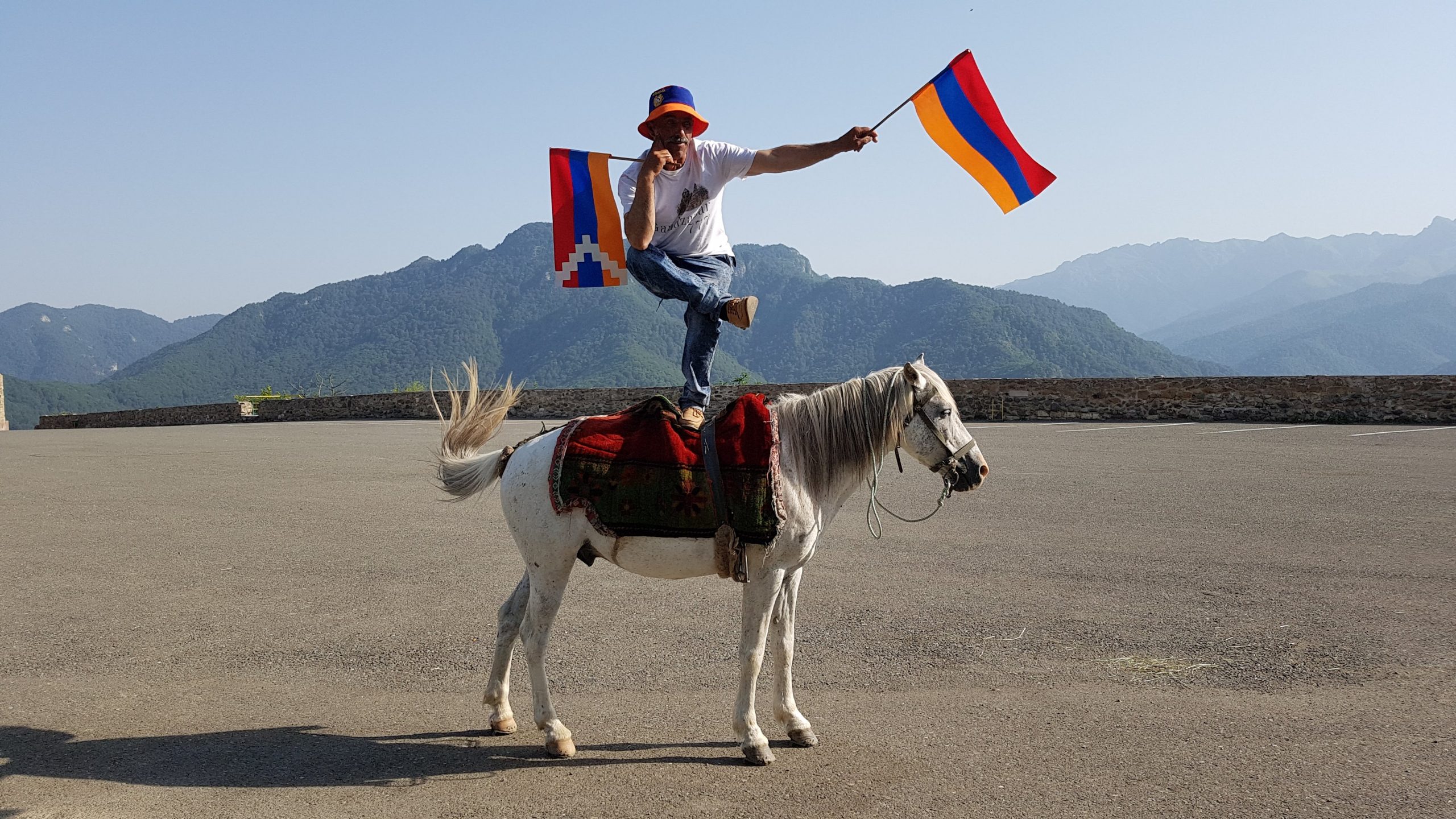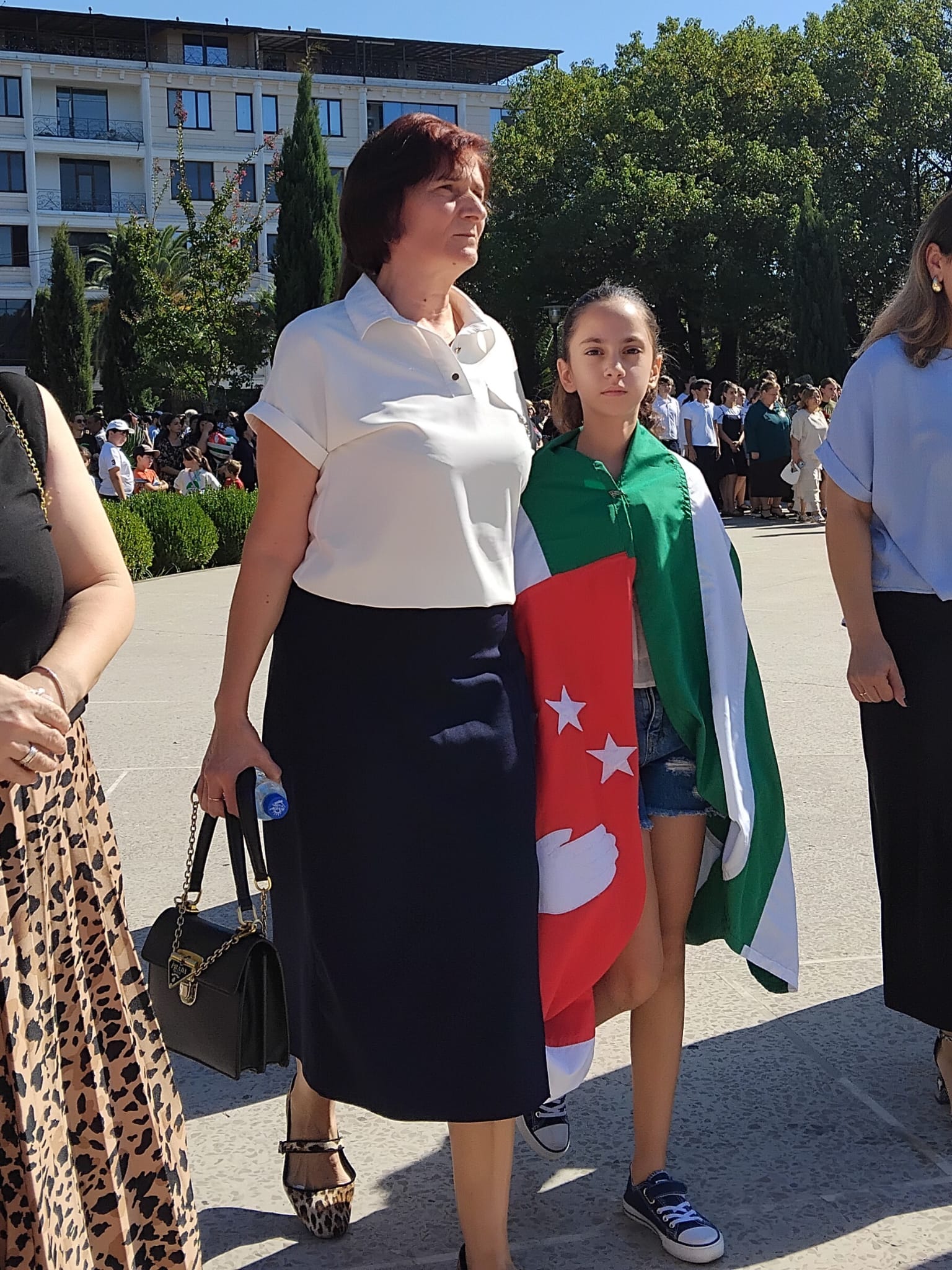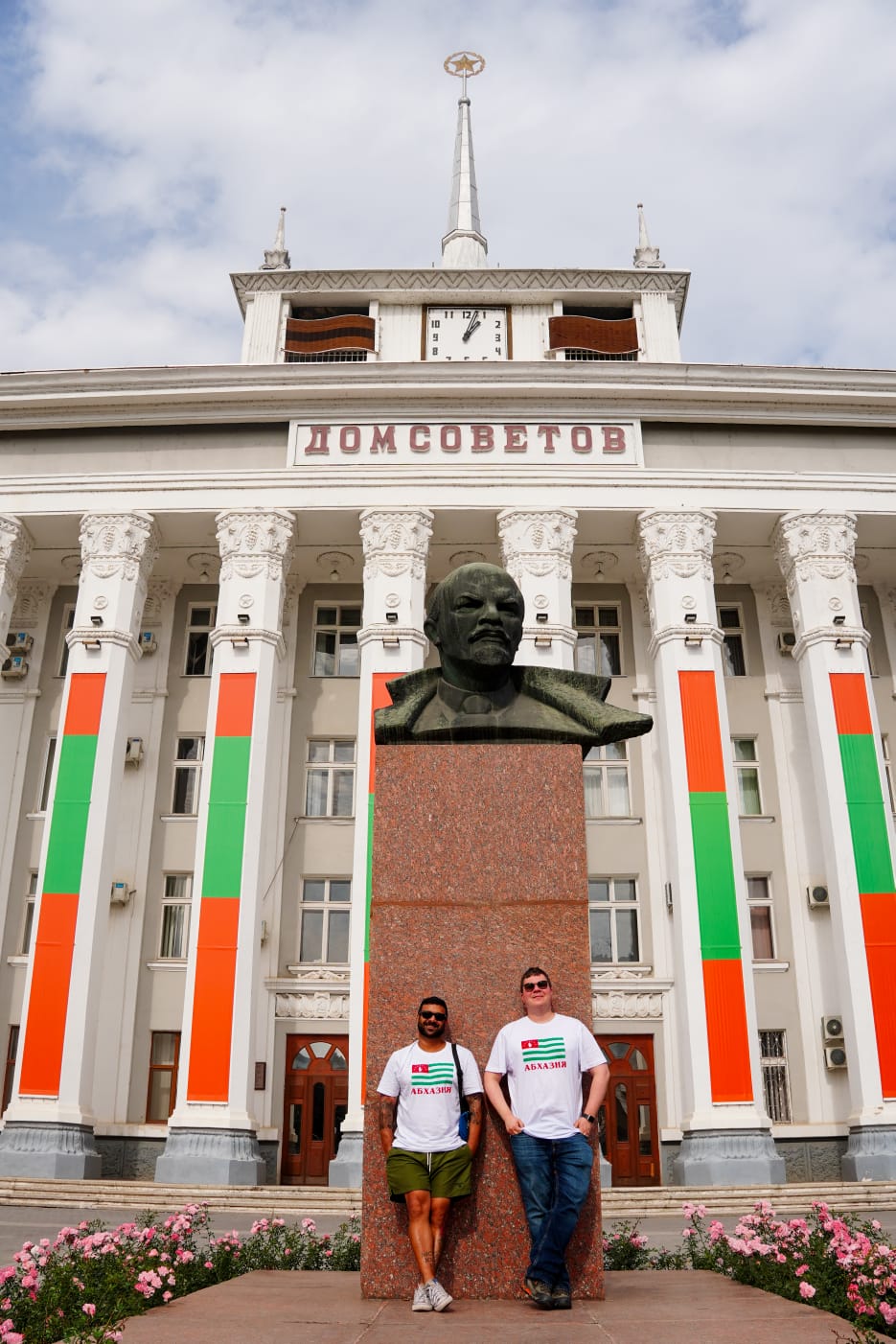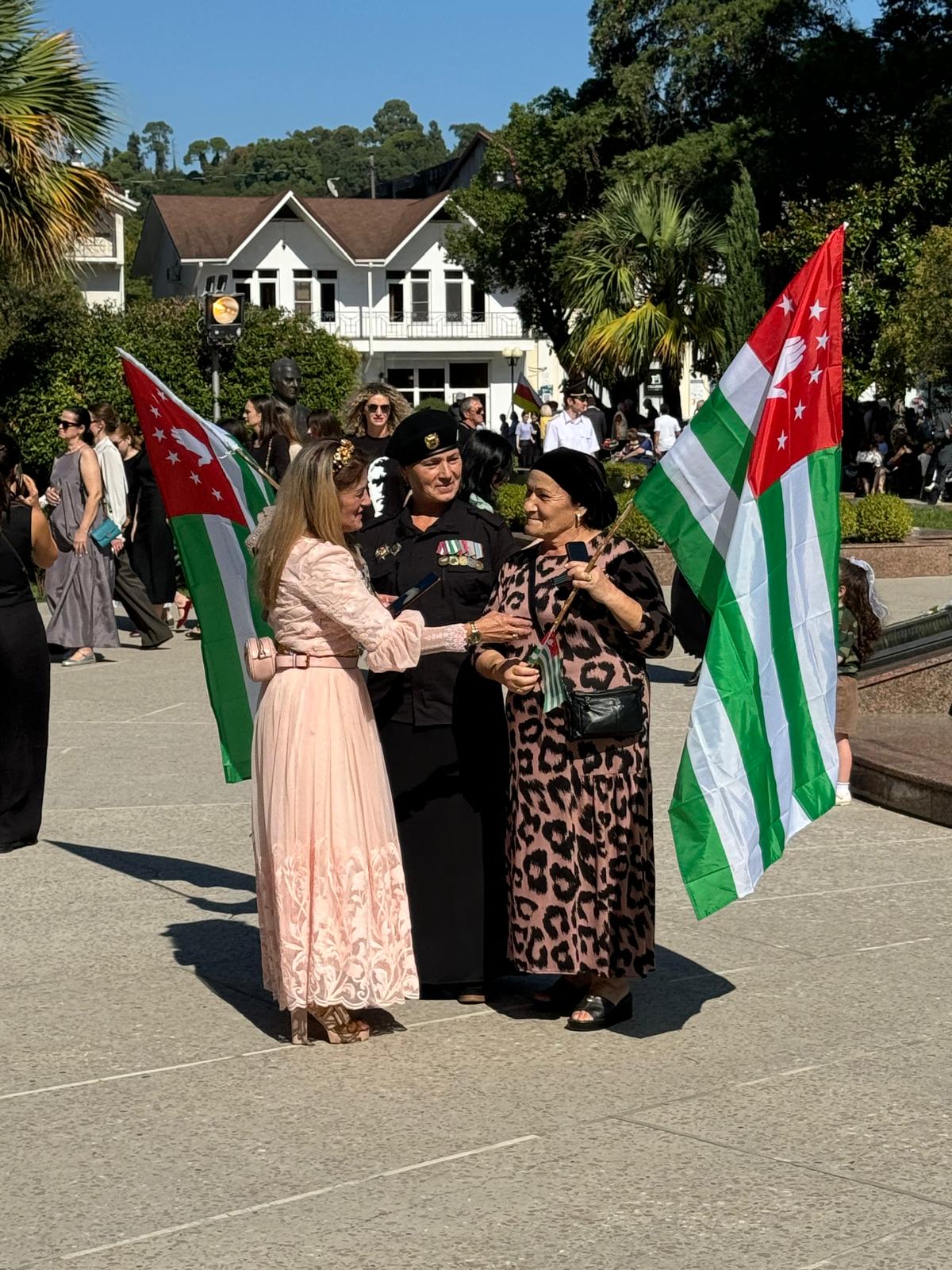The flags of the Caucasus region carry significant historical and cultural meaning that reflects the region’s diversity. Each Caucasian flag represents the history, culture, religion, and natural landscape of this very unique region.
Table of Contents
The Caucasus Region Geography
The Caucasus region spans from the Black Sea to the Caspian Sea. The region is known for its diversity, culture and languages. This region is also known for its complex history which has often led to bloody conflicts. Some territories still struggle today for autonomy or independence.
The region can be divided into the North Caucasus, often referred to as Ciscaucasia, and the South Caucasus, also known as Transcaucasia. The North Caucasus is mostly occupied by Russian Republics and Krais, while the South Caucasus is governed by post-Soviet republics, Armenia, Georgia, and Azerbaijan.
Abkhazia, South Ossetia, and Nagorno-Karabakh are partially recognised or unrecognised countries which are frozen conflict zones that struggle to be recognised by the international community.
Abkhazia and South Ossetia are recognised by five United Nations members, Russia, Venezuela, Nicaragua, Nauru, and Syria. However, the wider international community sees it as a part of Georgia. Although Nagorno-Karabakh ceased to exist on the 1st January 2024, it truly deserves a mention.
Here’s a breakdown of the North, South, and Unrecognised countries’ flags of the Caucasus and what they symbolise.
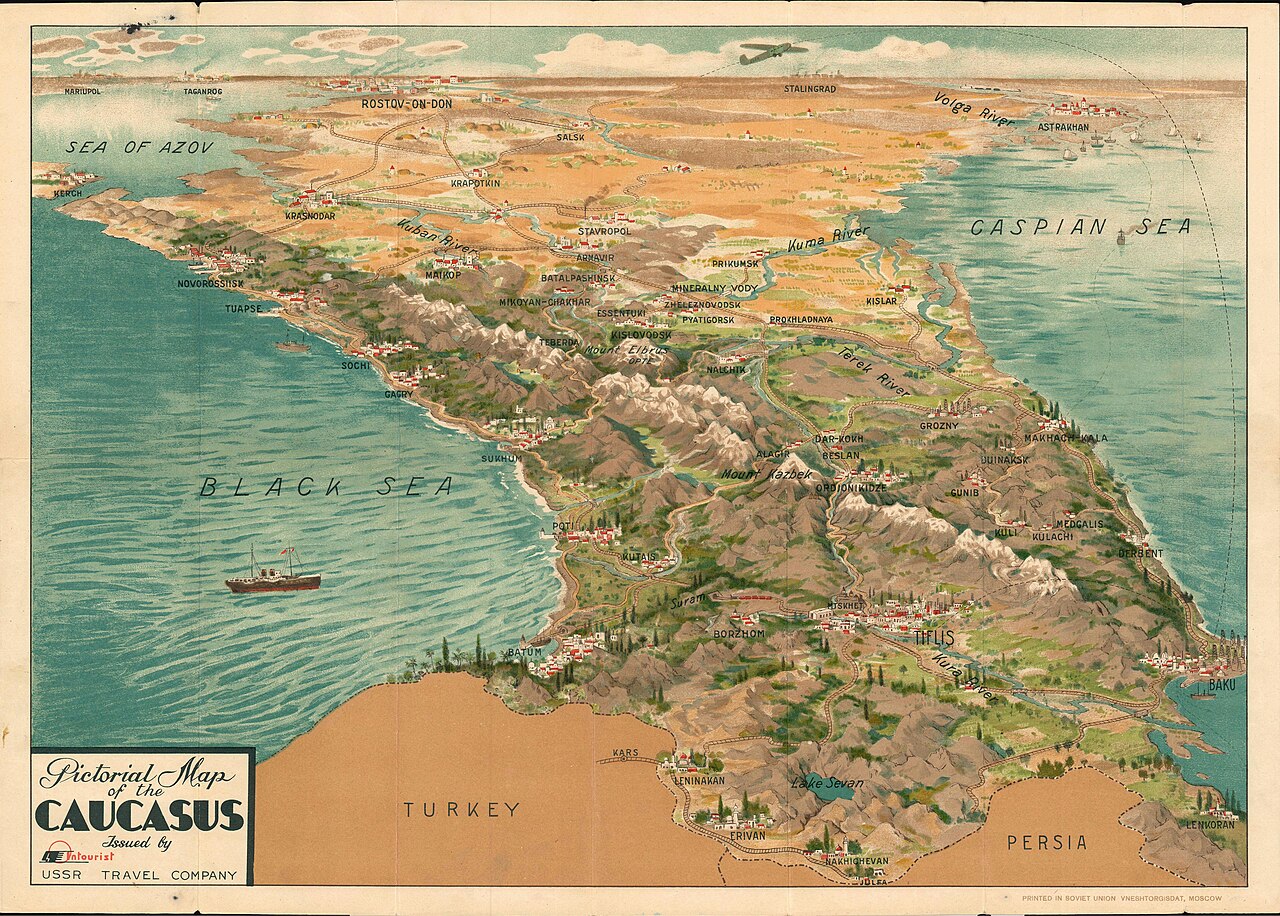
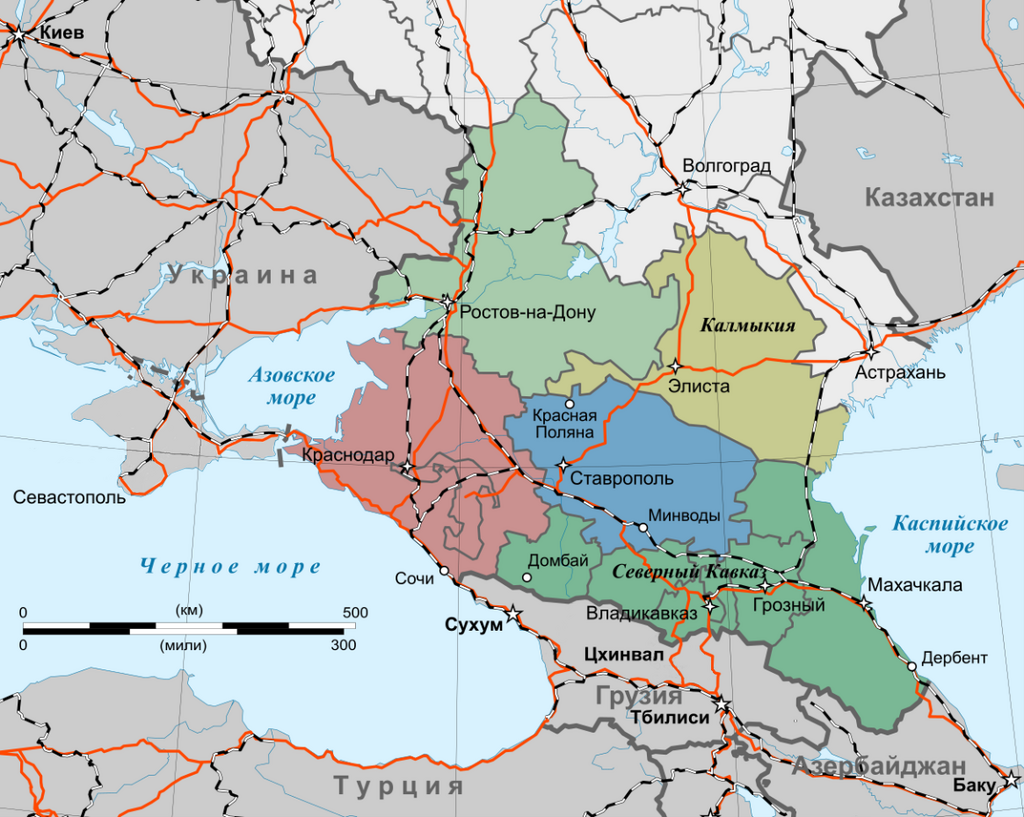
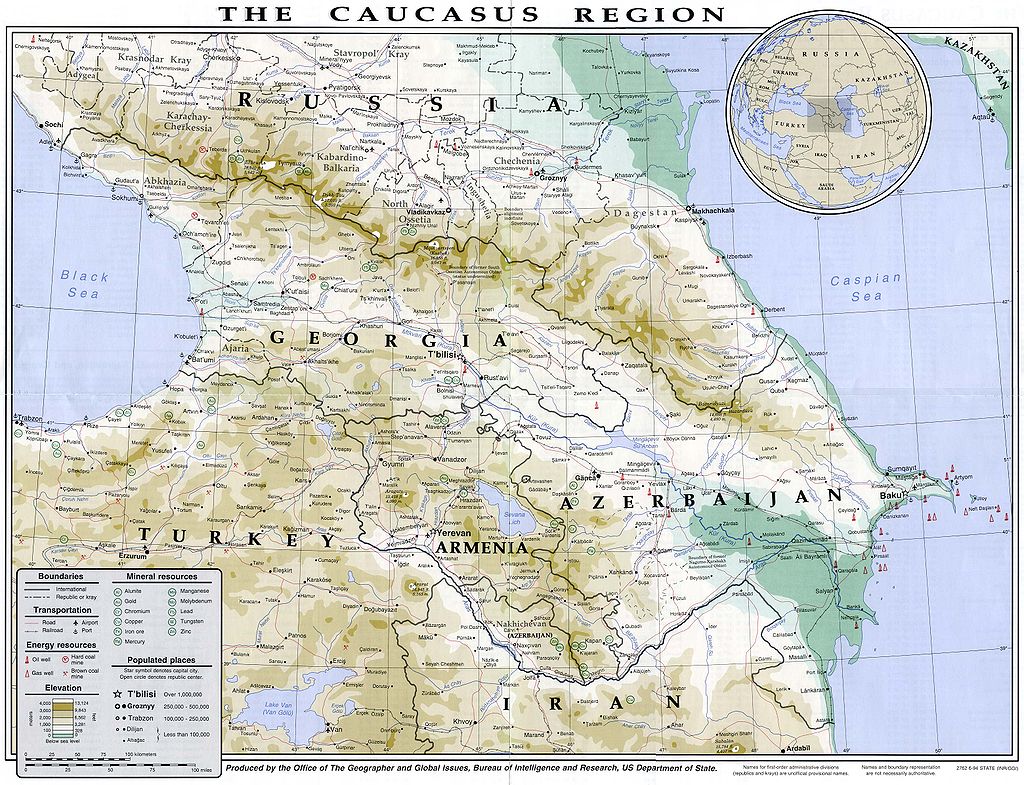
North Caucasus Flags
The North Caucasus consists of the flowing Republics, Adygea, Chechnya, Dagestan, Ingushetia, Kabardino-Balkaria, Karachay-Cherkessia, and North Ossetia-Alania. It also contains 2 Krais, Krasnodar and Stavropol. Although it partially contains Kalmykia Republic and Rostov Oblast, the flags will be included. See all our tours to the North Caucasus.
Adygea (Republic of Adygea)
The green-coloured flag with twelve golden stars and three crossed arrows. The golden stars represent the twelve historical tribes of the Circassian people while the arrows symbolise strength, resilience, and unity. The colour green reflects Adyghe’s association with Islam. Adygea is an enclave within Krasnodar Krai.
Chechnya (Chechen Republic)
The flag of Chechnya has changed throughout the year. The current flag flown in Grozny with three horizontal stripes consisting of green, white, and red with a national design pattern on the hoist side.
The colour green reflects the Chechen people’s Islamic religion while white represents peace and red reflects the courage, resilience, and sacrifice of the Chechen people. Learn more about the Chechen flag, and see all our tours to Chechnya.
Dagestan (Republic of Dagestan)
The tricolour Dagestani flag consists of the colour green, blue, and red in horizontal stripes. The top colour green symbolises the main faith of the Dagestani people, the middle blue represents the peaceful Caspian Sea and red symbolises courage and strength.
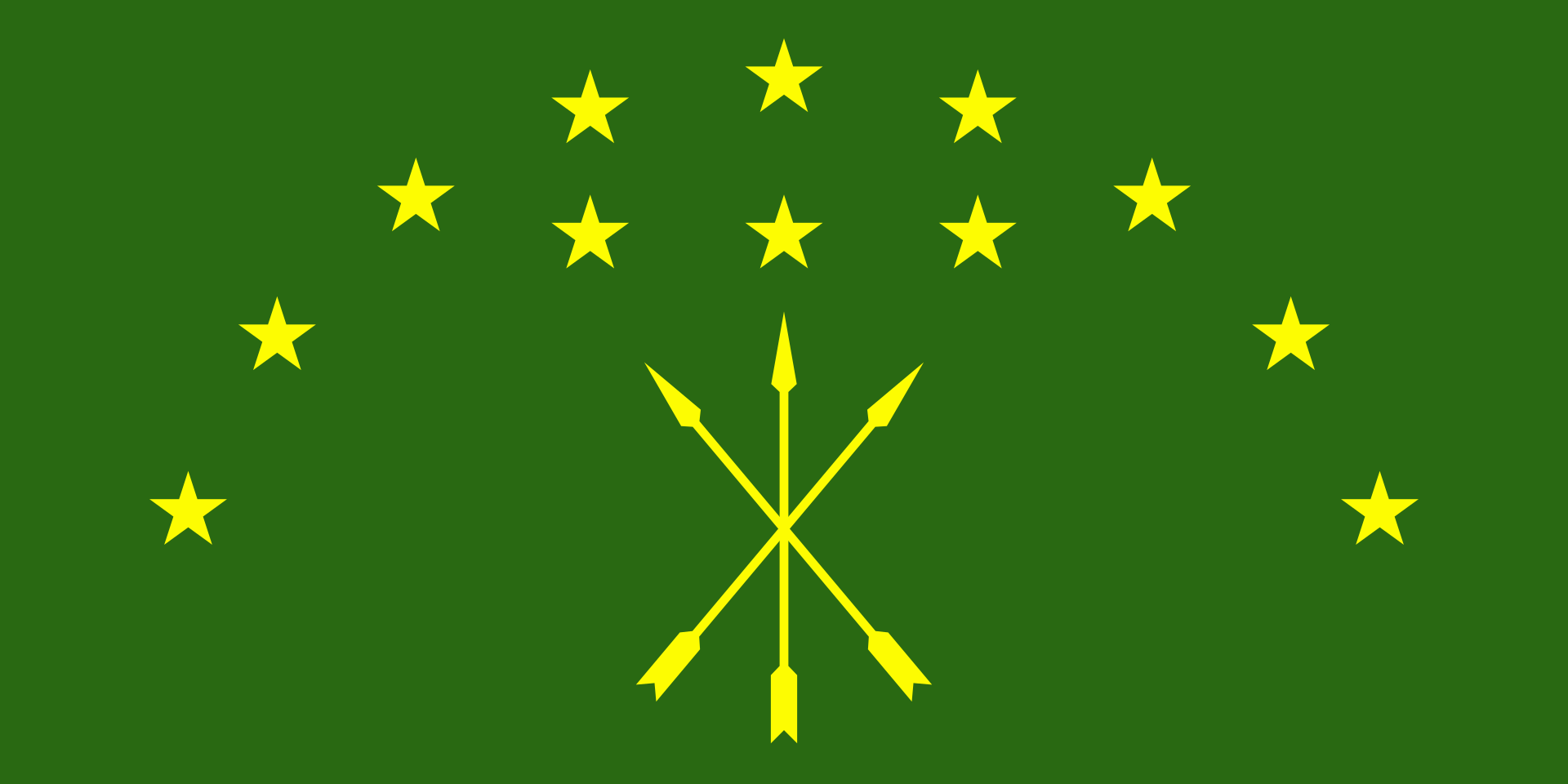
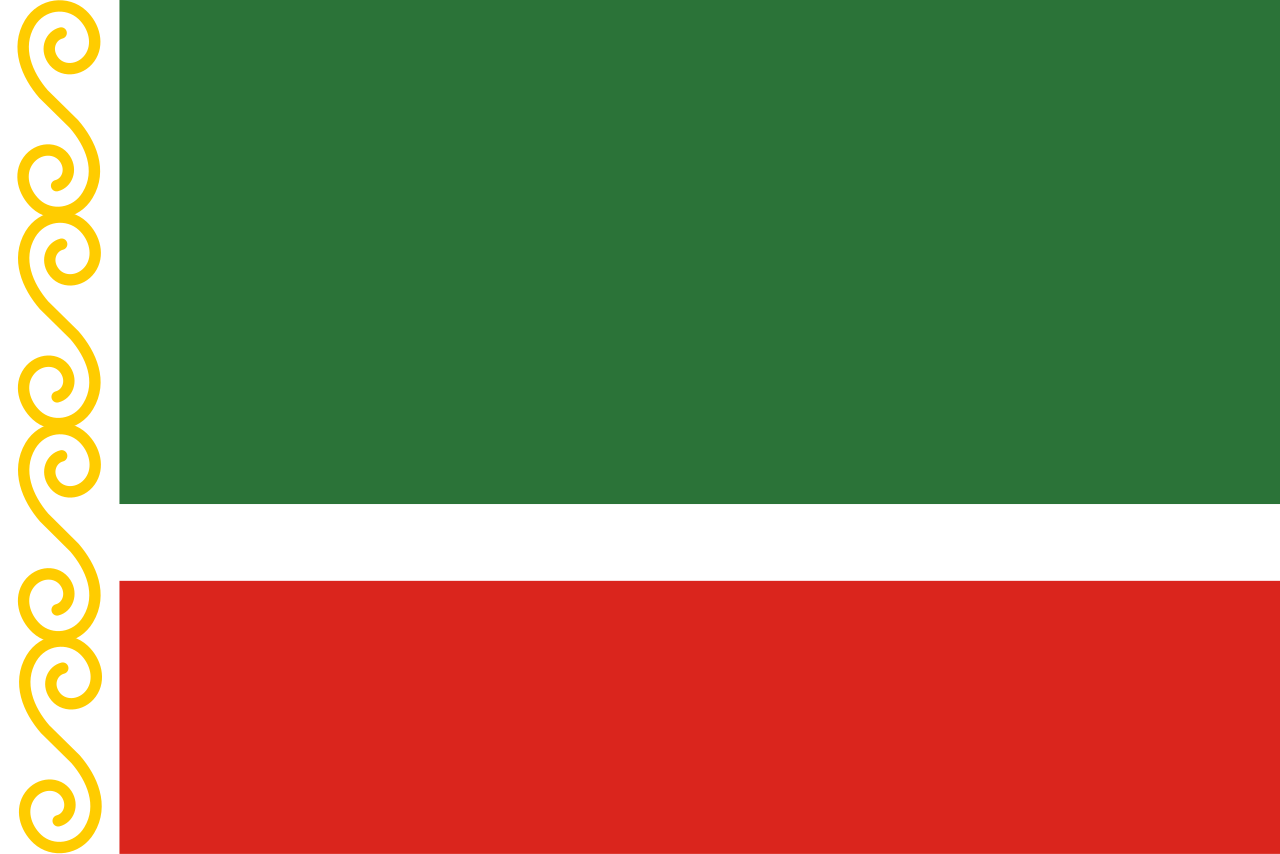
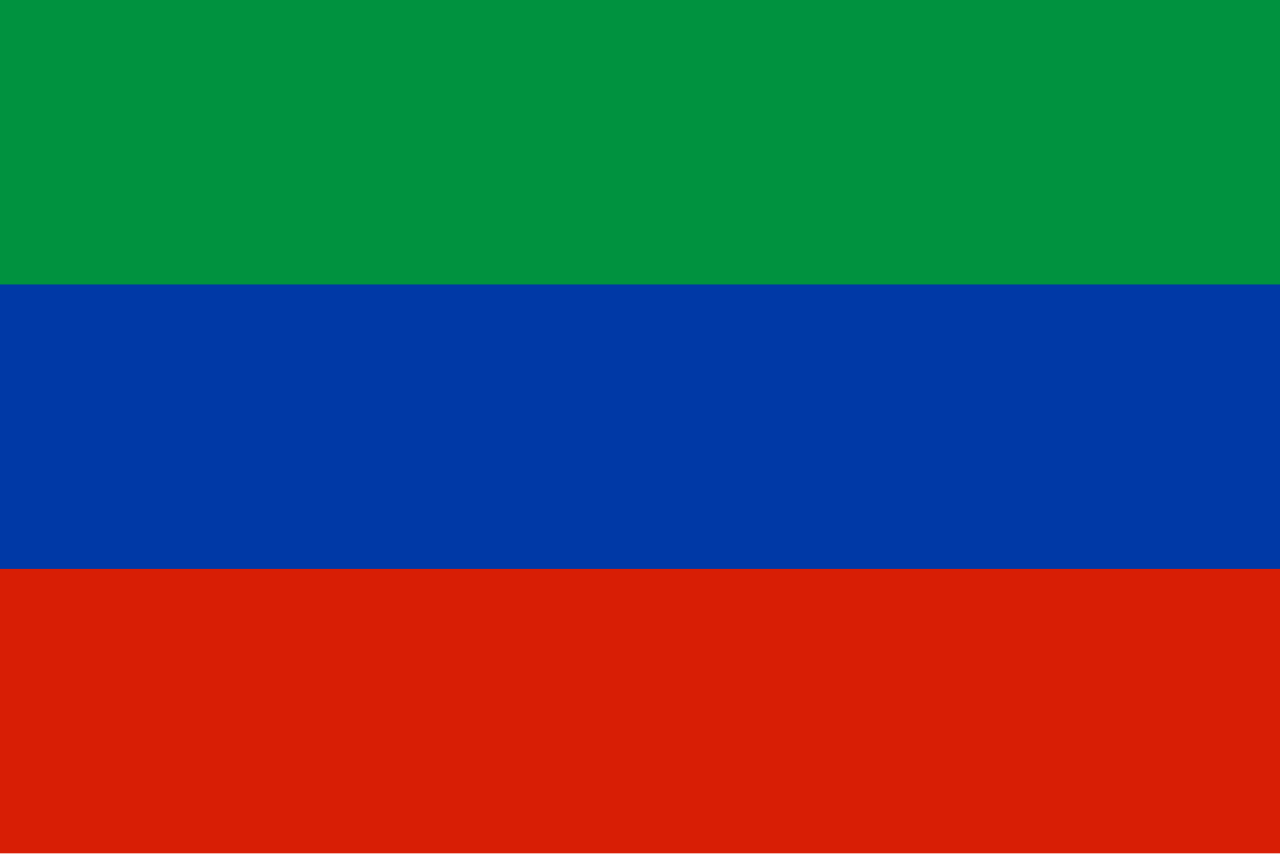
Ingushetia (Republic of Ingushetia)
The flag of Ingushetia consists of white with green vertical borders and a spiraling red solar symbol in the center. The colour green represents Islam, white indicates peace while the central red symbol symbolises eternity and the continuous well-being of the people and nation.
Kabardino-Balkaria (Kabardino-Balkarian Republic)
The Kabardino-Balkaria flag is a horizontal tricolour consisting of colours blue, white, and green with an emblem of Mount Elbrus. The top blue represents the Balkars and the bottom green represents the Kabardians. The Balkars and Kabardians are the two major ethnic groups. The middle colour white represents peace and unity while Mount Elbrus is symbolic of the region and people.
Karachay-Cherkessia (Karachay-Cherkess Republic)
The tricolour flag of Karachay-Cherkessia consists of blue, green, and red with an emblem of mountains. The top blue colour represents the Karachay people and the middle green represents the Cherkess people. The bottom red signifies the unity of the people in the region. The emblem represents the mountainous landscape of the region.
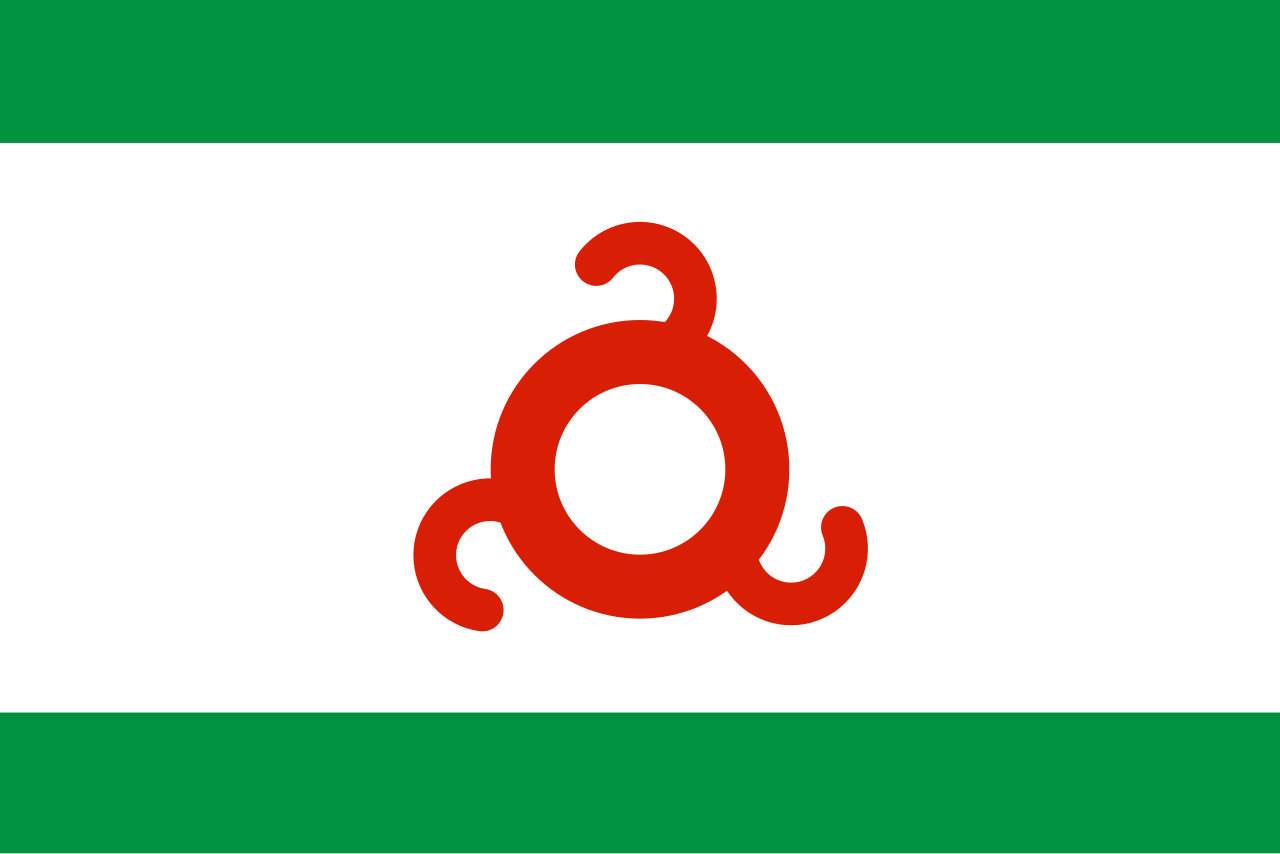
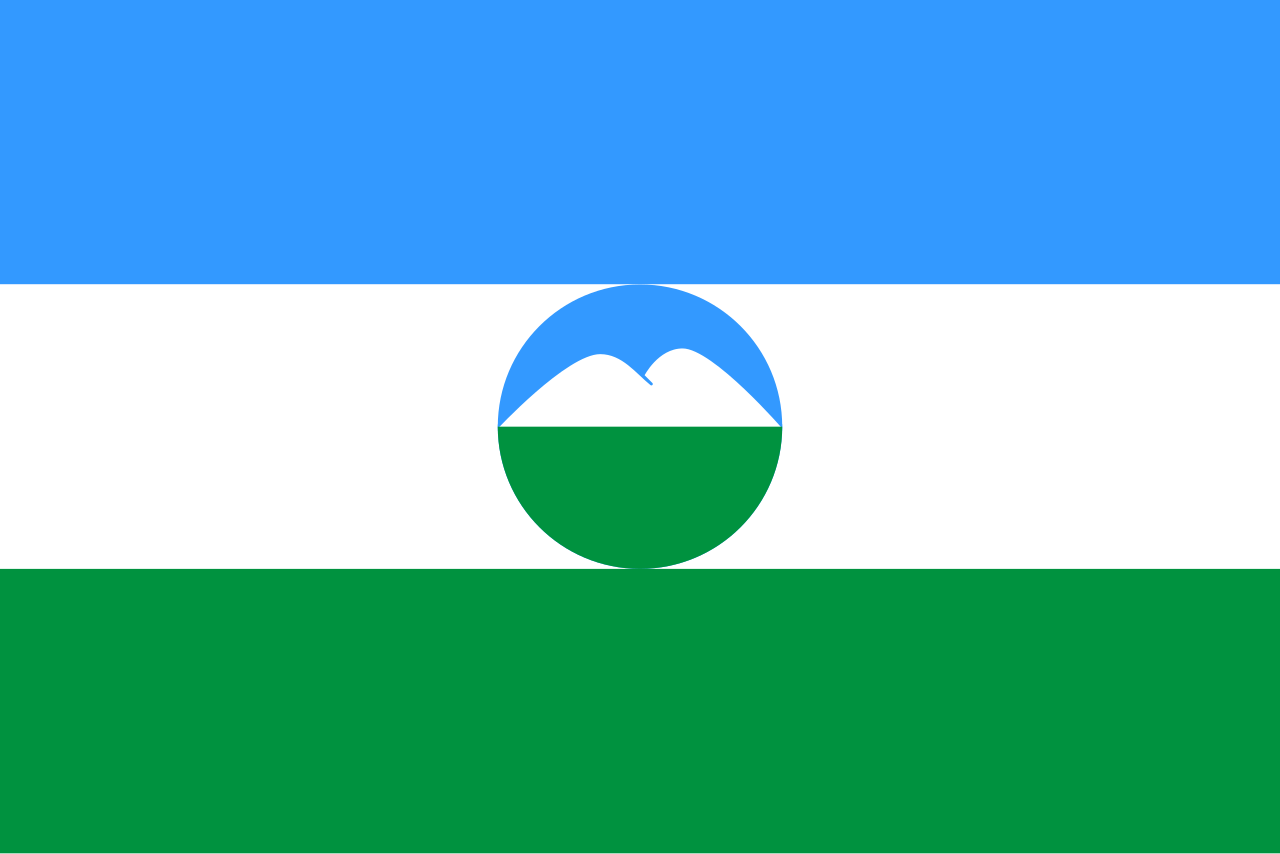
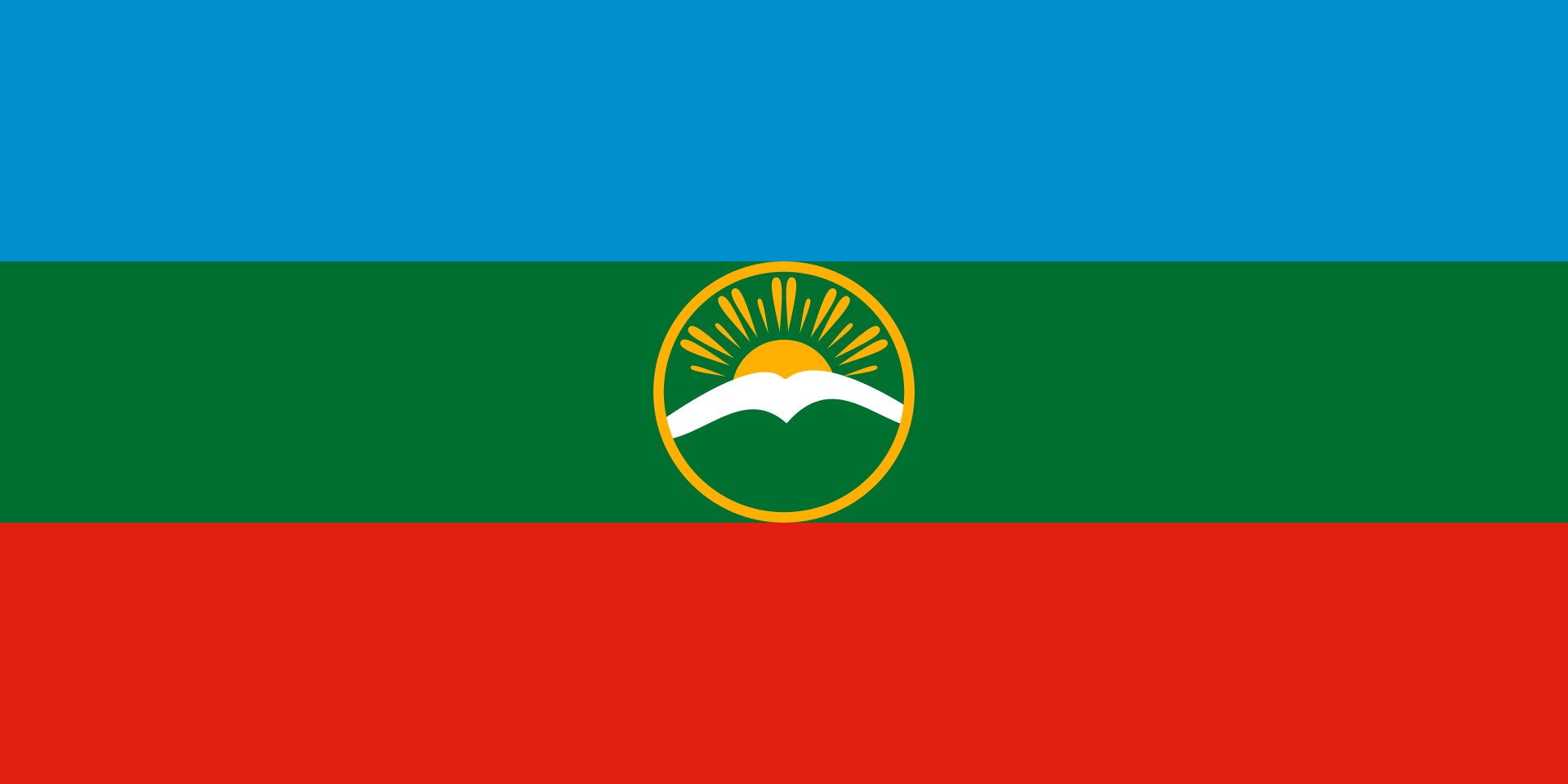
North Ossetia (Republic of North Ossetia-Alania)
The flag of North Ossetia is a horizontal tricolour. Consisting of the colours white, red, and yellow. The top white represents peace, the middle red symbolises bravery and the bottom yellow reflects the region’s wealth of the land. The South Ossetia flag was inspired by the North Ossetian flag.
Krasnodar Krai
The horizontal tricolour flag of Krasnodar Krai consists of dark blue, pinkish-red and green. The flag features the regional coat of arms in the centre. The colours symbioses the diversity of Krasnodar’s cultural heritage. The coat of arms represents the regional history. The second-largest city is Sochi, see all our tours to Russia.
Stavropol Krai
The flag of Stavropol Krai consists of golden yellow with a white Scandinavian cross which is off-centre and shifted toward the hoist. The coat of arms of Stavropol Krai can be found in the center of the cross.
The golden-yellow symbolises the steppe and natural wealth of the region and the white Scandinavian cross represents peace. The coat of arms represents the regional history. The administrative centre is Pyatigorsk, famous for its health spa and Caucasian Mineral Waters.
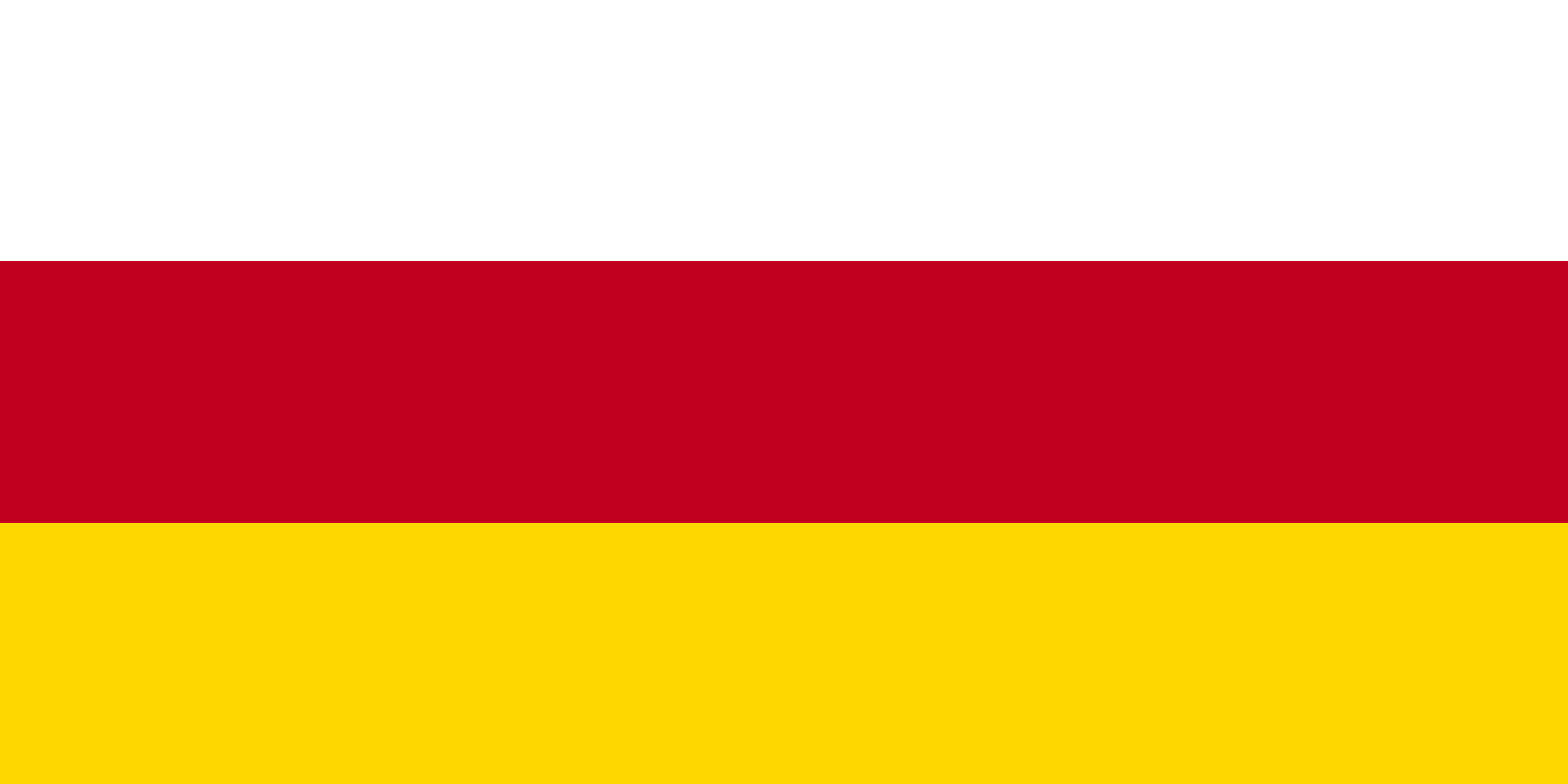
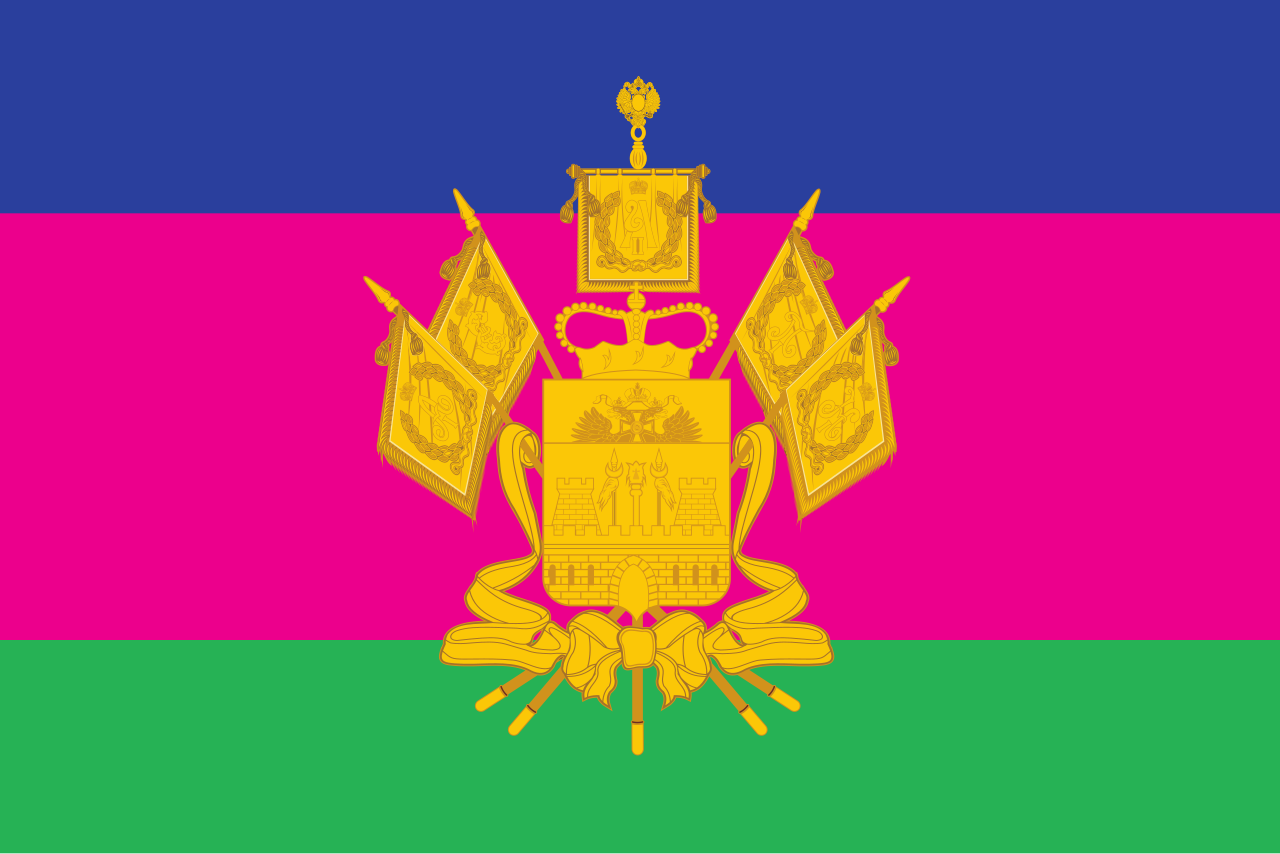
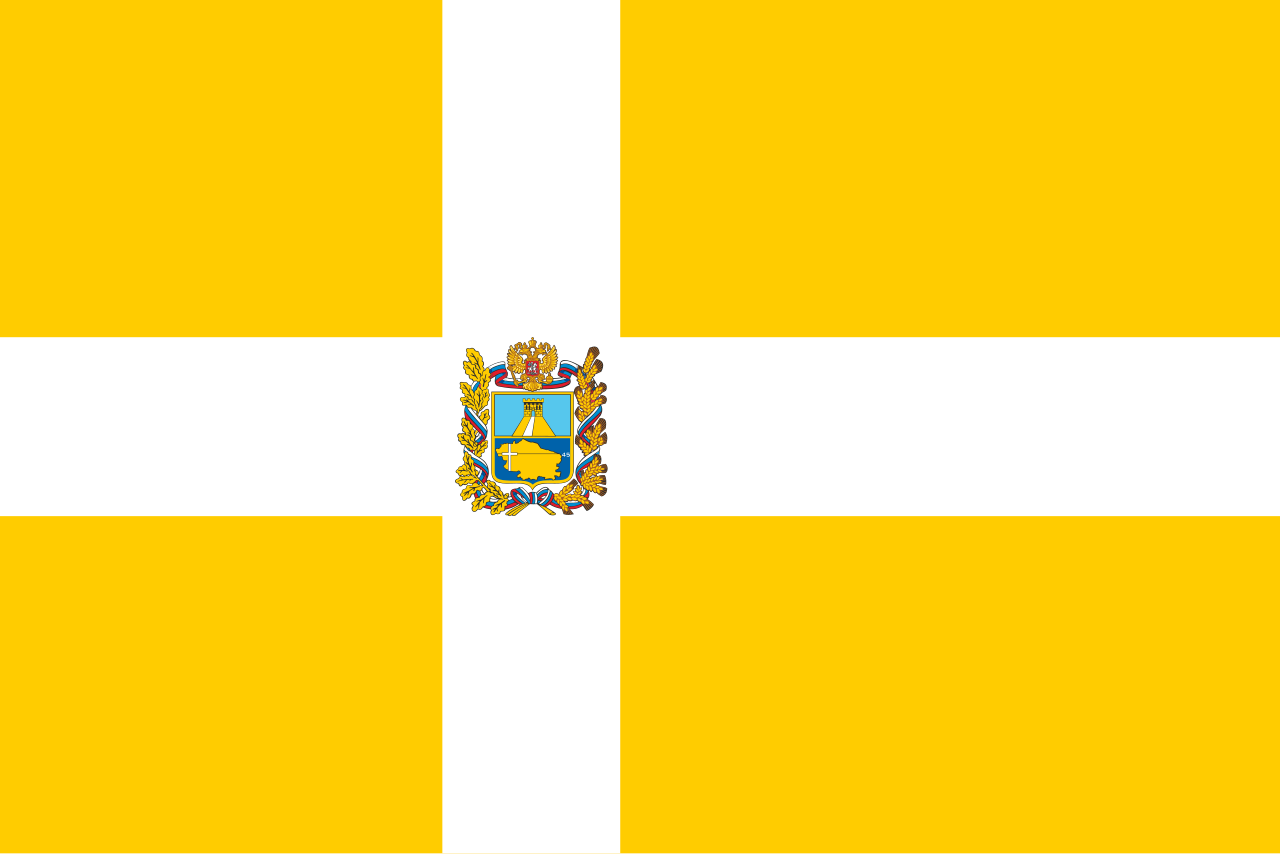
Kalmykia (Republic of Kalmykia)
The flag of Kalmykia is yellow with a blue circle in the centre containing a white lotus flower. The yellow symbolises the sun, while the blue signifies the sky, eternity, and stability. The white lotus reflects the spirituality and purity of Buddhism.
Rostov Oblast
The flag of Rostov Oblast is displayed horizontally and vertically. The tricolour flag is influenced by the colours of the traditional Don Cossack flag. Blue stands for courage and perseverance, yellow represents the fertile lands of the region and red reflects valour and bravery. The vertical white stripe on the hoist side represent purity and peace.
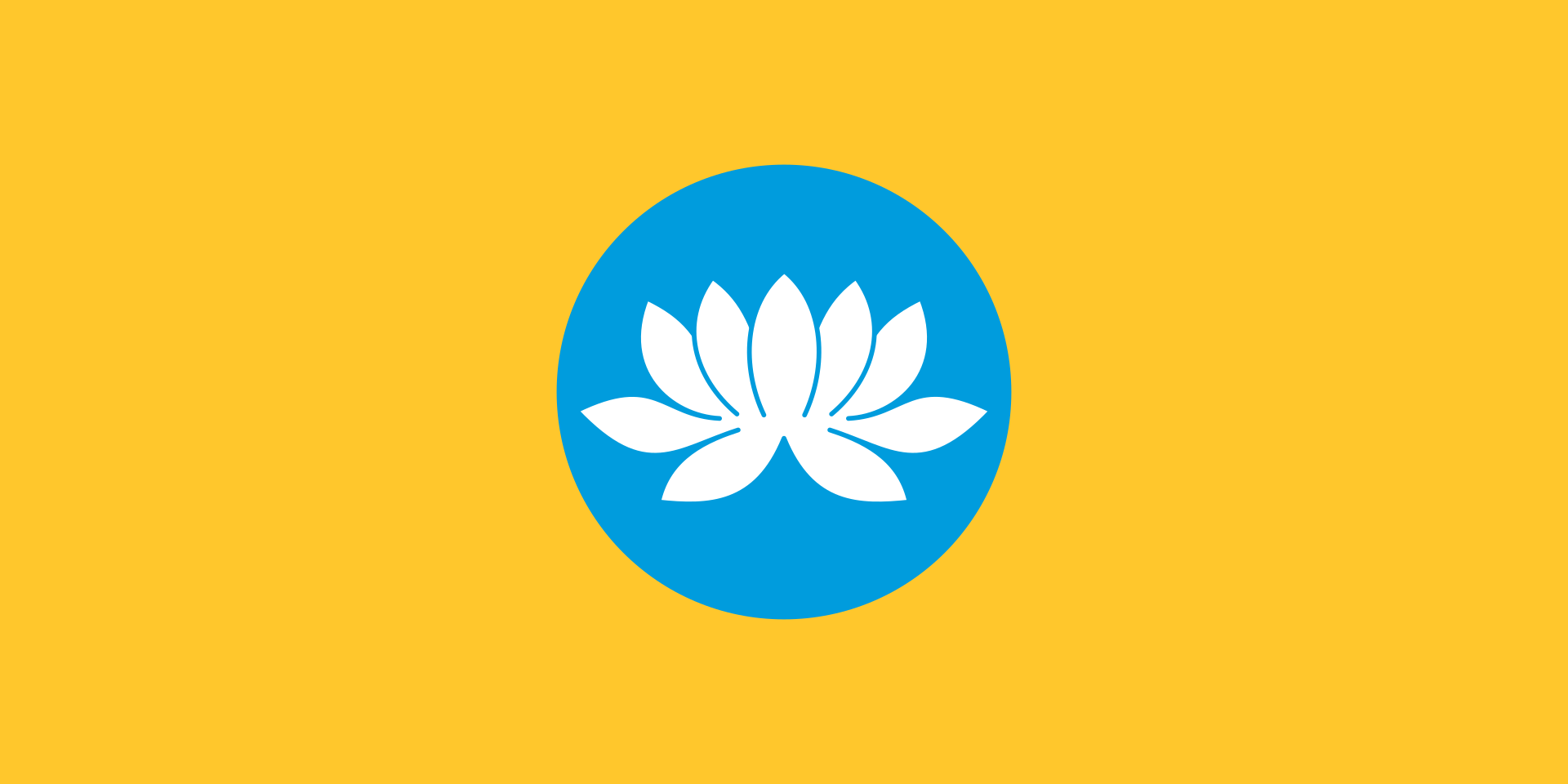
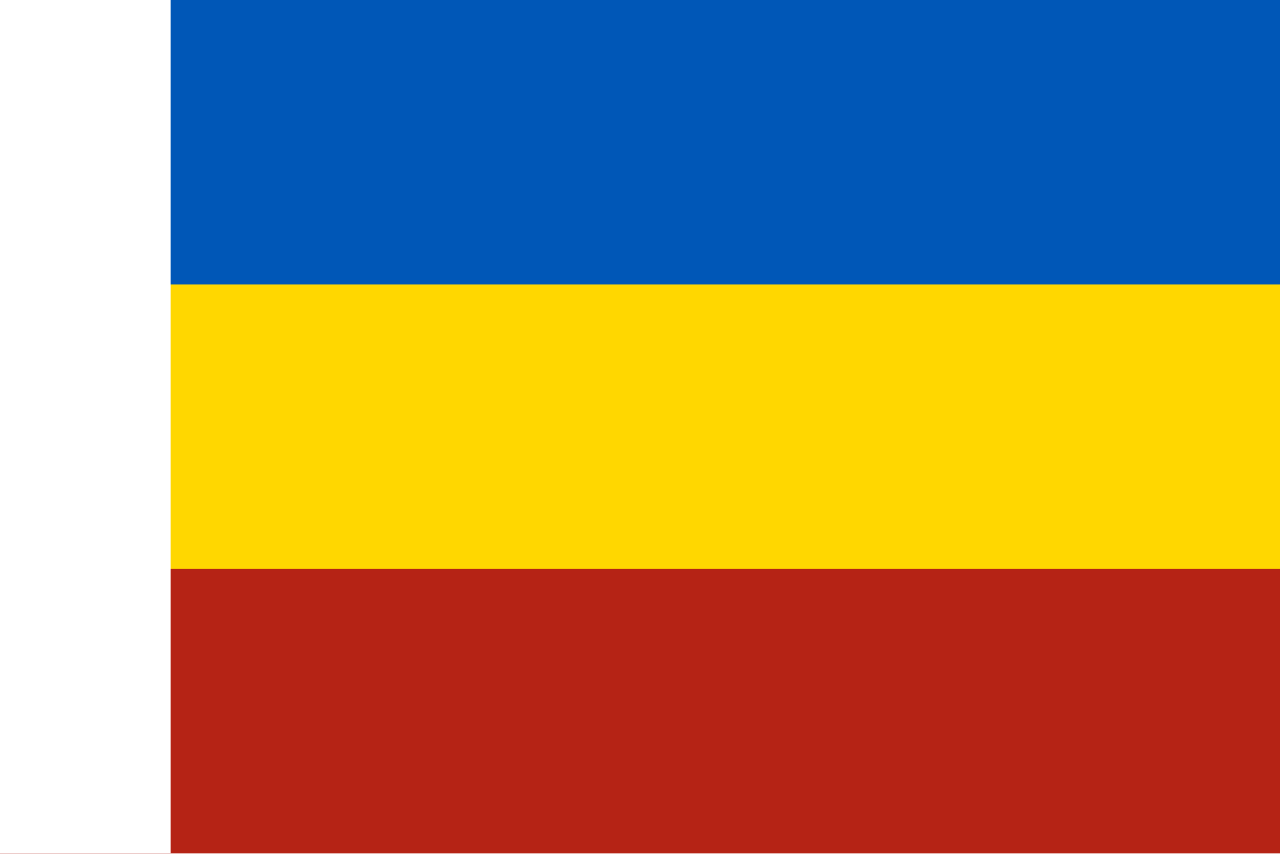

South Caucasus Flags
The South Caucasus, Transcaucasia, includes the independent post-Soviet countries of Armenia, Azerbaijan, and Georgia. It also contains three disputed, unrecognised countries Abkhazia, South Ossetia, and Nagorno-Karabakh.
Armenia (Republic of Armenia)
The Armenian flag is a horizontally striped tricolour consisting of red, blue, and orange. The flag reflects the rich Armenian culture and history.
The red represents the bloodshed and sacrifices of the Armenian people throughout history, particularly during their struggle for independence and survival. The blue is a symbol and testament to the Armenian people’s wish to live in peace under a clear sky. While the orange reflects the courage, creativity, and hard work of the Armenian people, particularly in building a brighter and better future.
The Armenian flag is a powerful symbol that reflects the Armenian people’s national identity and fight for survival. See all our tours to Armenia.
Azerbaijan (Republic of Azerbaijan)
The flag of Azerbaijan is a horizontal tricolour consisting of the colours blue, red, and green featuring a white crescent moon and an eight-pointed star in the centre. Known as the Rub el Hizb, the symbols signify Turkic identity and Islamic culture.
The top colour blue represents the Azerbaijani Turkish heritage and their ethnic connection to other Turkic nations. The middle colour red symbolises the nation’s desire for modernisation and integration into the wider international community. The bottom colour green reflects Islam, a colour used in many Islamic countries to represent the faith.
See all our tours to Azerbaijan, or learn more about current affairs in Azerbaijan.
Georgia
The flag of Georgia is often referred to as the “Five-Cross Flag”. The unique design is influenced by Georgia’s history and religious faith (Christianity). The design of the Georgian flag has 5 red crosses on a white background. The colour white symbolises peace and purity.
The Central St. George’s Cross reflects the spiritual foundation of Georgia, and St. George, the saint is revered in the Christian faith. The Four Bolnur-Katskhuri Crosses represent the Four Evangelists (Matthew, Mark, Luke, and John).
Nowadays, in Tbilisi, you’ll see the Georgian flag alongside the European Union (EU) flag. Georgia aims to become an EU member, join us on one of our tours to Georgia.
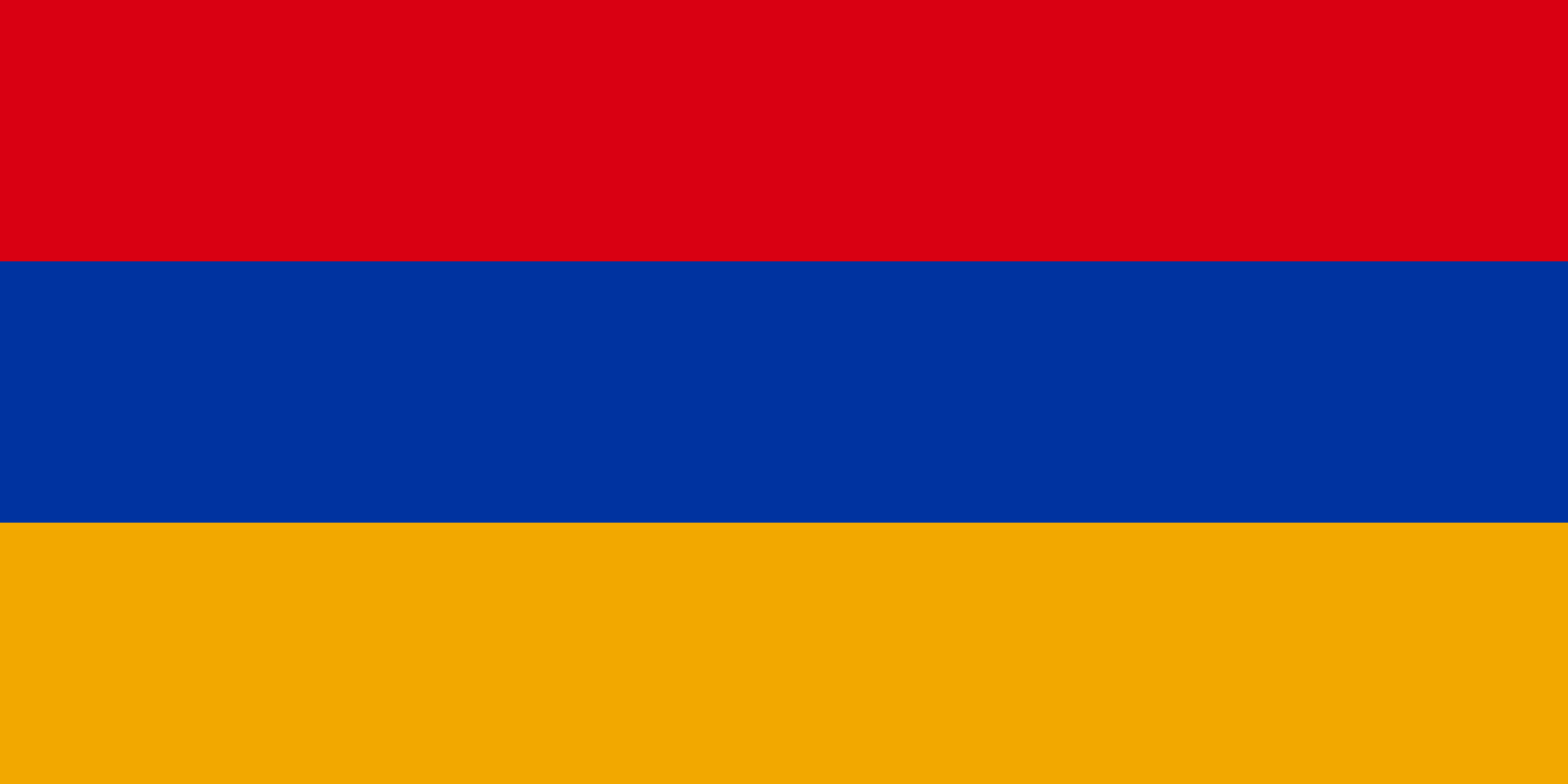



Unrecognised Caucasus Flags
Although all three countries are supported by Russia, both politically and militarily, Abkhazia and South Ossetia are partially recognised, with many United Nations members recognising them as part of the sovereign territory of Georgia, while Russia recognises them alongside its allays.
Unfortunately, between 19th – 20th September 2023, Azerbaijan launched a vicious attack on Nagorno-Karabakh, with Russia unable to provide support. Nagorno-Karabakh ceased to exist on the 1st January 2024.
Abkhazia (Republic of Abkhazia)
The partially recognised country flag is probably the most distinctive out of this category. The red canton on the upper left features an open white hand with seven white stars.
The open hand symbolises peace, the white stars represent the seven historical regions of Abkhazia while the red symbolises the sacrifice the Abkhaz people made for independence. The green represents Islam, and the white represents Christianity, the common religion in Abkhazia. Join one of our group or private tours to Abkhazia and see the flag of Abkhazia.
South Ossetia (Republic of South Ossetia)
The flag of South Ossetia is identical to the flag of North Ossetia. The tricolour flag symbolises South Ossetia’s regional identity, history, and struggle for self-determination.
The colours, white, red, and yellow, represent South Ossetia, a complex history that is influenced by ethnicity, cultural heritage, and political links to both Georgia and Russia. Learn more about the flag of South Ossetia, or join us on one of our South Ossetia tours.
Nagorno-Karabakh (Republic of Artsakh)
The flag of Nagorno-Karabakh is almost identical to the Armenian flag, as it symbolises the ethnicity, culture, and heritage links between the region and Armenia. The tri-colour flag consists of red, blue, and orange with a white five-toothed, stepped pattern.
The red represents the blood of those who bravely defended the Armenian people, the blue symbioses a peaceful sky, and the orange for the courage, determination, and hard work of the Armenian people. Learn more about travel to Nagorno-Karabakh.
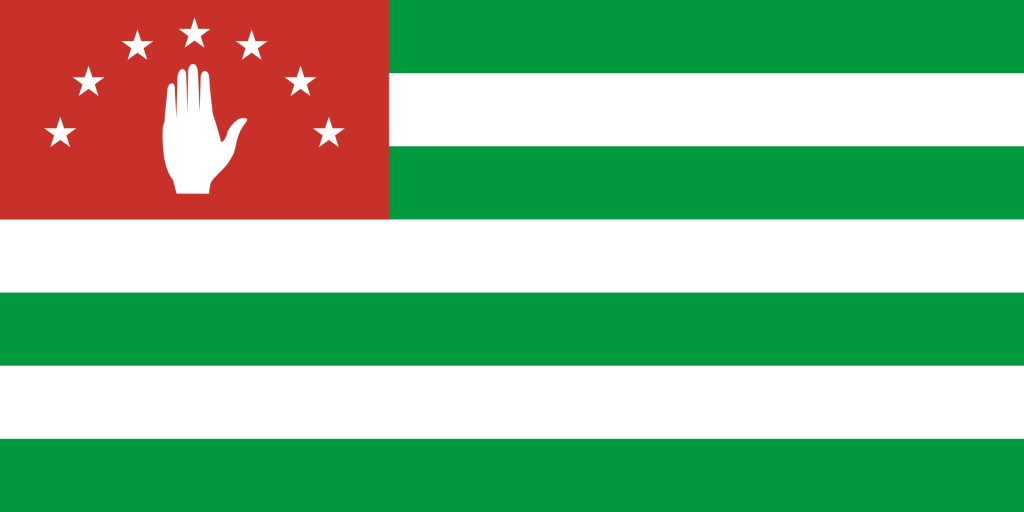

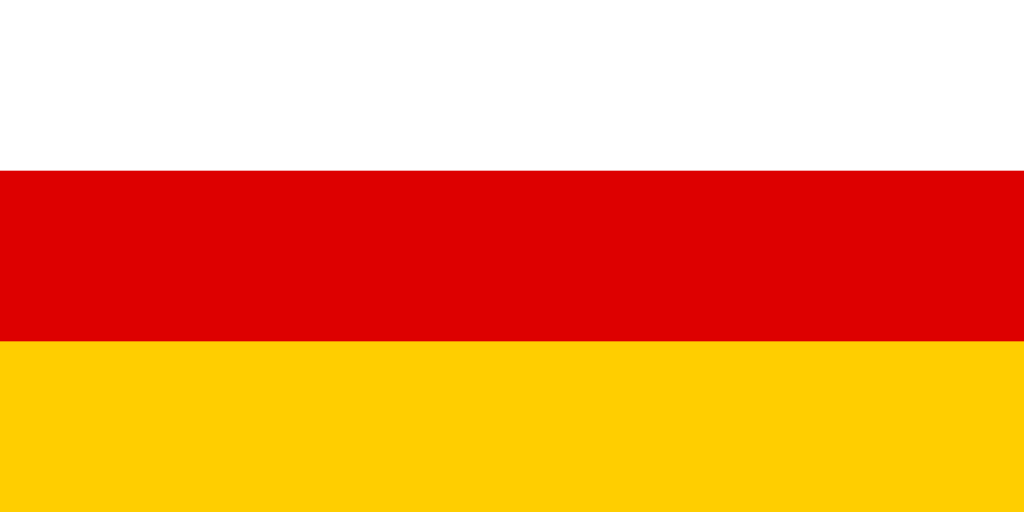

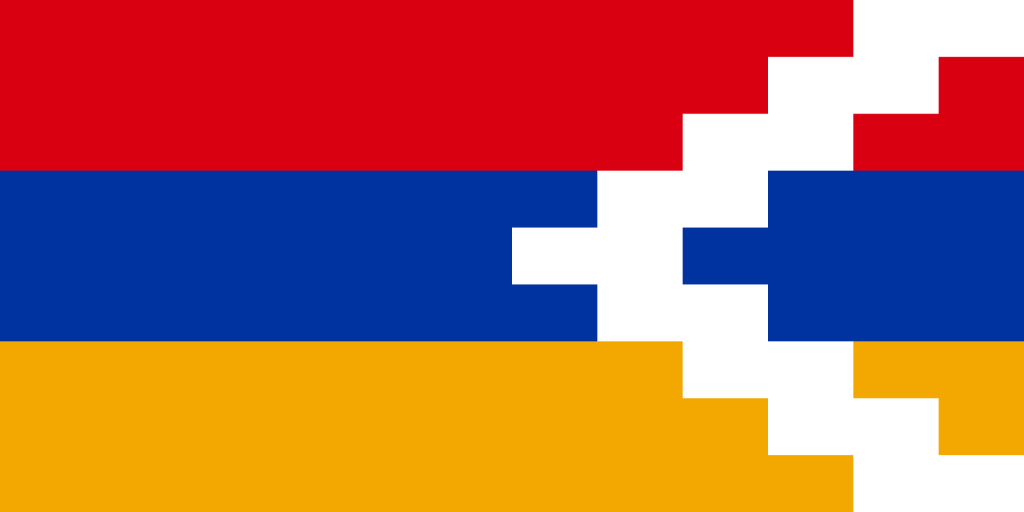

Autonomous republics (South Caucasus)
Many autonomous republics can be found in Russia and successor states from the Soviet Union. These include the Nakhchivan Autonomous Republic which has the same flag as Azerbaijan, although you can different colour scheme.
The Autonomous Republic of Adjara contains the Georgian flag on the upper left canton, with blue and white alternating horizontal stripes symbolic of the Black Sea.



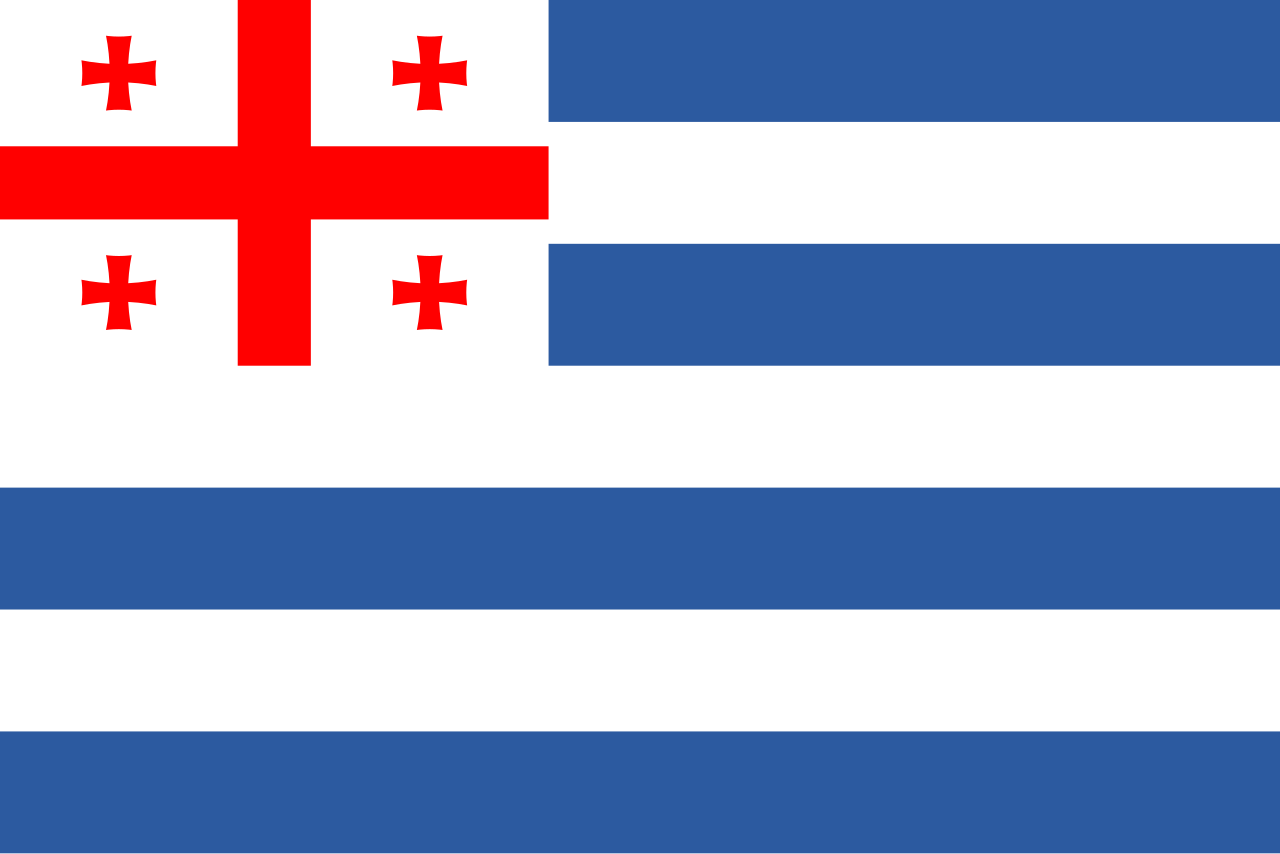

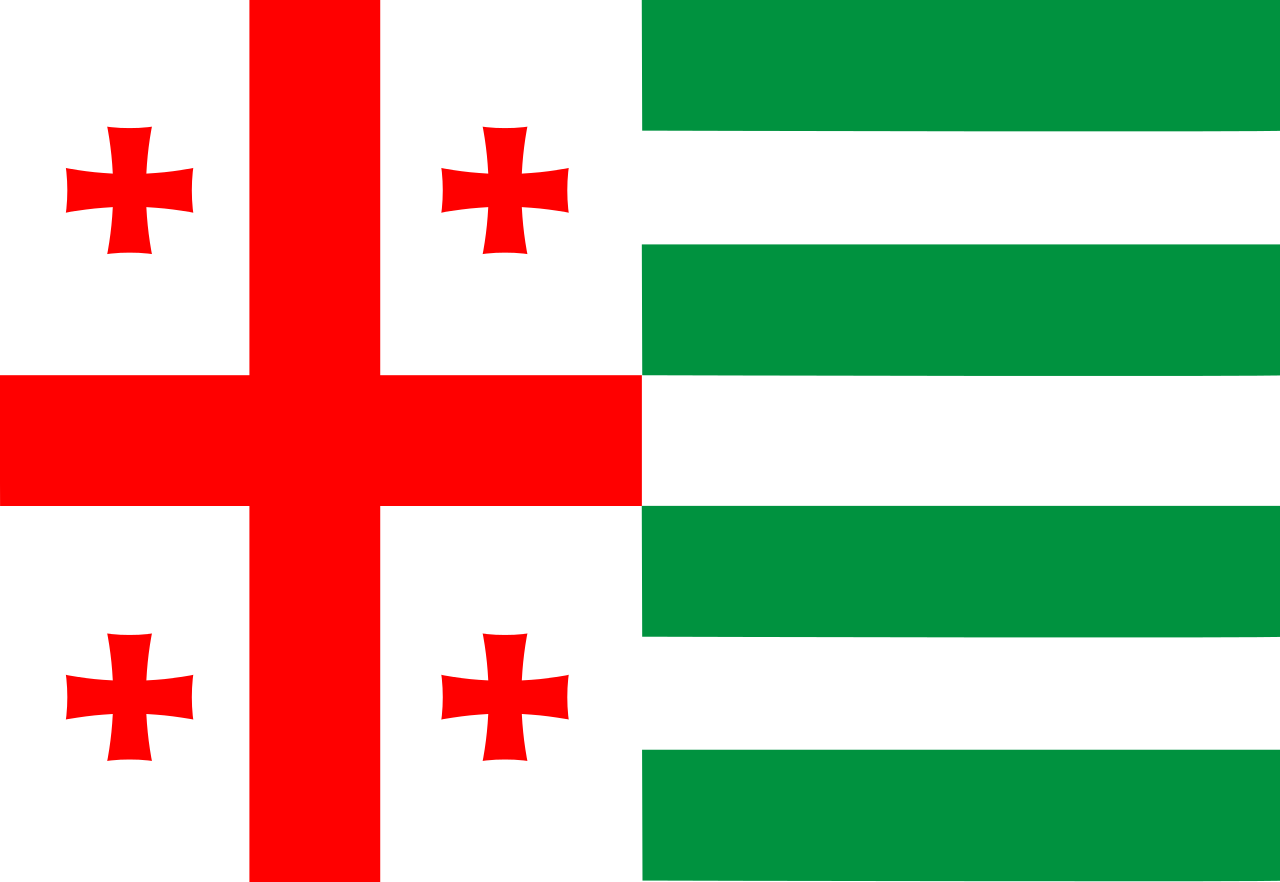

Tours to the Caucasus Region
We are the experts for group and private tours to the former Soviet Union and unrecognised countries in Eastern Europe and beyond. Join us on a number of tours we run!
